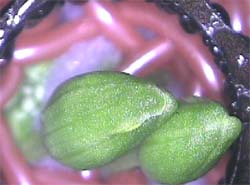
A micro-gravity platform for experiments of life sciences developed by CAS scientists has been operating smoothly onboard the orbiter module of the "Shijian-8," a recoverable Chinese satellite for breeding seeds of plants, which was launched on Sept. 9 from the Jiuquan Satellite Launch Center in northwestern China's Gansu Province.
On the morning of Sept. 10, images received from the "seeding satellite" showed that two experiment facilities designed by scientists of the CAS Shanghai Institute of Technical Physics to study the impact of space environment on the embryonic development of transgenic stem cells and the growth of higher plants are working well.
This is the first satellite specially designed for seed breeding in space. Its orbiting module has a payload up to 500 kg with a size of a medium satellite. The scientific tests on the module are manipulated by land-based scientists through real-time interference.
Since 1987, nine Chinese satellites and several of China's six Shenzhou spacecraft have carried seeds for experiments and a number of new species of plant seeds have been bred in space, but never before has the country launched a satellite exclusively for seed breeding, according to reports by China Daily.
By last October, China had approved large-scale plantation of 43 species of space seeds. The planting of space tomatoes and green peppers in Southwest China's Sichuan Province, which started in 1999, has raised average yield by 10 to 20 per cent, with the fruits bigger and of better quality, according to earlier newspaper reports. |